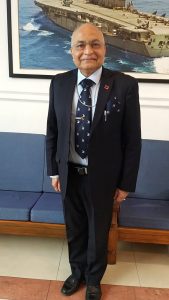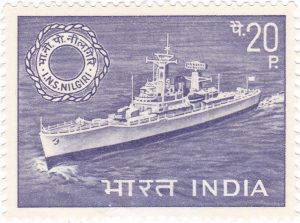
By Lt. General VK Saxena (Retd.)
New Delhi. 05 April 2020. “Mr Kulur, this radar will have to be broken down and carried on five mules to 13000 ft”… Whaaaat sir? I could see the good scientist from LRDE almost fainting. That’s how started the story of Low Level Light Weight Radar or LLLR for short.
It all started in 2004 when the plan to raise two Light Air Defence Regiments for the mountains and High Altitude Area (HAA) got the Govt’s approval. These regiments were to be equipped with ZU 23-2 light air defence guns and Igla 1-m man-portable missiles. In the plains version of this regiment, the radar-based early warning of air threat is provided by the Reporter Tactical Control Radar. Such radar was found to be too huge and bulky to be taken to the mountains and HAA.
A project was thus sanctioned in 2006 to the Electronics and Radar Establishment Development Establishment (LRDE); the radar lab of Defence Research and Development Organisation (DRDO) to design and produce a Low Level Light Weight Radar. Bharat Electronics Limited was to be the Production Agency (PA) . Some 16 LLLRS were approved for the two Regiments. Mr Kulur of LRDE was the Project Director for LLLR.
In the years that followed a lot of efforts were put in by the team of scientists and design engineers of LRDE, DRDO and BEL to put together an initial design of LLLR. I remember having been invited as a user representative to have a look at the initial design concept.
The first design concept review meeting was a catastrophe as what I saw was, that the team was working on a regular vehicle-mounted radar design (albeit a light vehicle) with a mono-block phased-array antenna. The only saving grace was that instead of two vehicle configuration of the Reporter radar, this radar was planned to be mounted on one vehicle. In all, nearly a thousand kg configuration!
I dropped a bombshell when I announced that this radar is not going anywhere. It has to be broken down into small assemblies each not weighing more than 30-40Kg as to be carried by a ‘mule’.
Mule? The design team looked at me with amusement and surprise. Yes Army mule, I retorted. But we have never seen one Sir a chorus hit the roof.
That was the start point of LLLR design. Few will believe that the scientists had to be shown an Army Mule. It was a uncommon sight as Mr Kulur looked at the animal with great concern trying to fathom how on earth his radar, or parts thereof, will ever fit on the shaky platform in front of him!
Past the lighter moments started some serious design re-work. The challenge was huge. At the outset the weight of the system was to be cut down drastically. Most of the components and assemblies were to be so re-designed as to be independent modular pieces capable of getting connected with other assemblies in a continuum producing an into-action time of about 30 minutes.
On the first design review, the task looked simply impossible and far beyond the capability of the gentlemen on the table. We broke off in a mood of uncertainty or should I say a bit of despondency and hopelessness.
A period of nearly two years that were to follow saw the team breaking its head at the challenges that stood before them as immovable mountains. The first whimper of success started to come in the trans-receiver assembly which could be broken down into three modular pieces. Hundreds of failures and a few successes was the general pattern as the team toiled to meet the exacting requirements.
I remember the biggest challenge was the antenna component as critical waveforms and beam patterns were to be precisely retained and yet the antenna had to be made foldable and packable as a mule load. A lot of permutations and combinations were tried out each one of them failed without exception.
Another 6-8 months went by. Help from a foreign OEM was sought by LRDE on certain technical aspects. Some more months of R&D before some signs of a rudimentary antenna design started to emerge. The team was inching closer , I could see but still far from what will be a final antenna design.
One full year and two months elapsed in trying to come closer to the product in many of its specifications yet the same continued to fall short on several specs. A long uphill journey ensued dotted with a few achievements on the way besides failures, that were in plenty.
Let me cut to the period of 2009-10 when the equipment was ultimately fielded for user trials. The trial was a mixed success as the radar, though found compliant on major and critical parameters of the GSQR, still fell short on quite a few of them
The team was back in action to get the product into the compliant domain. After 6-7 month the radar was fielded again and this time it met all the parameters.
15 Mar 11 was a big day in Mr Kulur’s life when the Indian Army Signed a contract for 16 LLLRs at a cost of over 100 Crores. Yes, the radar was mule portable.
It was all of 170 kg divided into loads each weighing less than 30kg. It had a an instrumentation range of 50 km whereas the field detection range for a target of 2sq m radar cross-section was 40 km with an accuracy of 30 m and a resolution of 120m in range and 6 degrees in elevation.
It was a matter of great pride for me to see all the 16 radars get inducted into Army Air Defence before I hung my uniform on 30 May 2015.
For this humble and two penny worth of contribution in making LLLR happen, I had the honour to be awarded by the Institution of Electronics and Telecommunication Engineers ( IETE). As I held the award citation in my hand, I had in my mind the ‘real deserving’ recipients – MR KULUR AND HIS TEAM.
(Lt. Gen.VK Saxena (Retd.) is a Delhi-based former Director General Army Air Defence. He is presently an Advisor to a leading Defence PSU . The views in the article are solely the author’s. He can be contacted at editor.adu@gmail.com).






















































































































